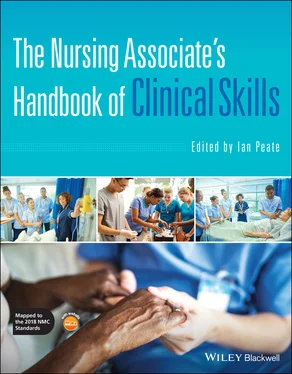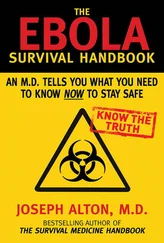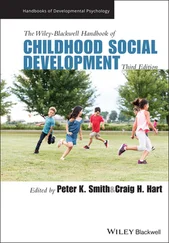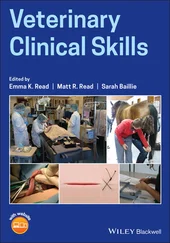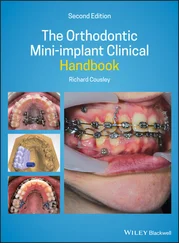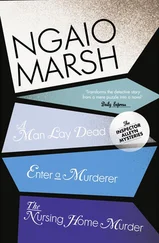The Nursing Associate's Handbook of Clinical Skills
Здесь есть возможность читать онлайн «The Nursing Associate's Handbook of Clinical Skills» — ознакомительный отрывок электронной книги совершенно бесплатно, а после прочтения отрывка купить полную версию. В некоторых случаях можно слушать аудио, скачать через торрент в формате fb2 и присутствует краткое содержание. Жанр: unrecognised, на английском языке. Описание произведения, (предисловие) а так же отзывы посетителей доступны на портале библиотеки ЛибКат.
- Название:The Nursing Associate's Handbook of Clinical Skills
- Автор:
- Жанр:
- Год:неизвестен
- ISBN:нет данных
- Рейтинг книги:4 / 5. Голосов: 1
-
Избранное:Добавить в избранное
- Отзывы:
-
Ваша оценка:
- 80
- 1
- 2
- 3
- 4
- 5
The Nursing Associate's Handbook of Clinical Skills: краткое содержание, описание и аннотация
Предлагаем к чтению аннотацию, описание, краткое содержание или предисловие (зависит от того, что написал сам автор книги «The Nursing Associate's Handbook of Clinical Skills»). Если вы не нашли необходимую информацию о книге — напишите в комментариях, мы постараемся отыскать её.
The Nursing Associate’s Handbook of Clinical Skills
The Nursing Associate’s Handbook of Clinical Skills
The Nursing Associate's Handbook of Clinical Skills — читать онлайн ознакомительный отрывок
Ниже представлен текст книги, разбитый по страницам. Система сохранения места последней прочитанной страницы, позволяет с удобством читать онлайн бесплатно книгу «The Nursing Associate's Handbook of Clinical Skills», без необходимости каждый раз заново искать на чём Вы остановились. Поставьте закладку, и сможете в любой момент перейти на страницу, на которой закончили чтение.
Интервал:
Закладка:
Challenges of Communication
Patient safety is a key priority in patient care, and communication errors are the most common cause of adverse events during episodes of patient care. Nursing associates and other healthcare providers endeavour to avoid communication errors during patient handover. SBAR and RSVP communication tools can reduce adverse events in a hospital setting.
Loss of information in verbal handover between different staff groups is known to be a contributing factor in clinical incidents (Rabøl et al. 2011; Müller et al. 2018), and consequently, the development and use of escalation tools allow us to reduce the chance of error by utilising a standardised approach across all professions.
Poor communication is identified as being a factor in 35% of hospital complaints; noted particularly is the quality and accuracy of the information (Ford 2015). The quality and accuracy of information is very much determined by the person escalating concerns; therefore, utilising the earlier suggestions to prepare the handover beforehand and utilising a ‘template form’ or SBAR stickers (often required by some National Health Service (NHS) Trusts) can help increase the likelihood of good communication.
Delayed communication of escalation concerns has previously been a concern and is regarded as being just as serious as other failures of communication (Taran 2011). The development of the NEWS system indicates where patient observations are abnormal and prompts the need to escalate concerns; however, the clinical judgement remains paramount in regards to timely escalation and prioritising it above other conflicting care activities.
Touch Point
The NEWS was introduced around 2007, in recognition of episodes of failed care where healthcare professionals had not recognised or failed to escalate patient deterioration, or did not escalate appropriately.
The NEWS attributes point to each observation taken and collectively gives an indication of the patient’s deterioration. The total score then identifies the type and route of escalation required (National Patient Safety Agency 2007). This is often embedded and adapted to fit with the hospital’s policy and available staff and teams to escalate to.
It is important to remember that this a ‘safety net’ tool. It is not necessary to wait for a ‘trigger’ to escalate when concern about a patient is justified by assessment and clinical decision‐making.
NEWS is becoming more popular outside of hospital environments, with adaptations starting to arise in nursing homes, GP surgeries and ambulance services. The evidence‐base underpinning NEWS was developed in and for inpatient hospitals; therefore, further research is required to build evidence‐base in using NEWS outside of a hospital environment.
Supporting Evidence
The following references supported the fundamental changes to the NHS approach to deteriorating patient care:
National Institute for Health and Care Excellence (2007) Acutely Ill Adults: Recognising and Responding to Deterioration . National Institute for Health and Care Excellence, London.
National Patient Safety Agency (2007) Recognising and responding appropriately to early signs of deterioration in hospitalised patients , London: National Patient Safety Agency.
Royal College of Physicians (2017) National early warning score (NEWS) 2: standardising the assessment of acute‐illness severity in the NHS , London: Royal College of Physicians.
Conclusion
SBAR and RSVP are tools that can be used to communicate or escalate concerns about a patient’s health. Continuity of patient care is achieved by the clear and concise transfer of patient clinical information from one healthcare provider to another during handover.
Effective communication is key in providing safe patient care. Communication failure in a healthcare setting has the potential to lead to serious medical errors.
Sharing patient‐specific healthcare information during handover requires situational awareness. In the hospital setting, most of the communication related to patient care occurs between nurses and physicians.
References
1 Featherstone, P., Chalmers, T. and Smith, G. (2008) RSVP: a system for communication of deterioration in hospital patients, British Journal of Nursing, 17(8): 860–864.
2 Ford, S. (2015) Communication errors behind third of hospital complaints. [online] Available: https://www.nursingtimes.net/roles/nurse‐managers/communication‐errors‐behind‐third‐of‐hospital‐complaints‐22‐09‐2015/. Accessed 2 October 2019.
3 Hill, W. and Nyce, J. (2010) Human factors in clinical shift handover communication, Canadian Journal of Respiratory Therapy, 46(1): 44–51.
4 Institute for Innovation and Improvement. (2010) Safer care SBAR implementation and training guide, Coventry: Institute for Innovation and Improvement.
5 Müller, M., Jürgens, J., Redaèlli, M., Klingberg, K., Hautz, W. and Stock, S. (2018) Impact of the communication and patient hand‐off tool SBAR on patient safety: a systematic review, BMJ Open, 8(8): e022202.
6 National Patient Safety Agency. (2007) Recognising and responding to early signs of deterioration in hospitalised patients, London: The National Patient Safety Agency.
7 Rabøl, L., Andersen, M., Østergaard, D., Bjørn, B., Lilja, B. and Mogensen, T. ( 2011) Descriptions of verbal communication errors between staff. An analysis of 84 root cause analysis‐reports from Danish hospitals, BMJ Quality and Safety, 2011(20): 268–274.
8 Randmaa, M., Mårtensson, G., Swenne, C. and Engström, M. (2014) SBAR improves communication and decreases incident reports due to communication errors in an anesthetic clinic: a prospective intervention study, BMJ Open, 4(1): e004268.
9 Resuscitation Council (UK). (2015) Immediate life support, London: Resuscitation Council UK.
10 Stewart, K. and Hand, K. (2017) SBAR, communication, and patient safety: an integrated literature review, MedSurg Nursing, 26(5): 297+.
11 Stonehouse, D. (2018) The SBAR communication framework: for when you need action, British Journal of Healthcare Assistants, 12(9): 450–453.
12 Taran, S. (2011) An examination of the factors contributing to poor communication outside the physician‐patient sphere, McGill Journal of Medicine, 13(1): 86.
8 Written Communication
Stuart Baker
University of South Wales, UK
Chapter Aim
The aim of this chapter is to support the readers in their understanding of their obligations when record‐keeping.
Learning Outcomes
By the end of this chapter, the reader will be able to:
Understand the purpose of records
Have an understanding of the professional expectations on the practitioner with regards to record‐keeping
Understand the importance of maintaining clear and accurate records
Test Yourself Multiple Choice Questions
1 Who can access a health record?The patient, healthcare professionals and the policeLawyers, allied healthcare professionals and advocatesBoth A and B
2 Which of these pieces of legislation does not relate to record‐keeping in health?The Communication in Nursing Act 2003Computer Misuse Act 1990Access to Health Records Act 1990
3 How does The Code (Nursing and Midwifery Council 2018a) relate to record‐keeping?It underpins the need for records that are ambiguous and can hide multiple meaningsIt underpins the need for clear and accurate recordsIt does not mention record‐keeping at all
4 Is it important to sign a record, and if it is, then why is it?It is not important, as everyone’s handwriting is unique to them so it is easy to see who has made the record in questionIt is essential so that it is clear who has made a recordIt is not important as the off‐duty records which staff are on duty at any time
Читать дальшеИнтервал:
Закладка:
Похожие книги на «The Nursing Associate's Handbook of Clinical Skills»
Представляем Вашему вниманию похожие книги на «The Nursing Associate's Handbook of Clinical Skills» списком для выбора. Мы отобрали схожую по названию и смыслу литературу в надежде предоставить читателям больше вариантов отыскать новые, интересные, ещё непрочитанные произведения.
Обсуждение, отзывы о книге «The Nursing Associate's Handbook of Clinical Skills» и просто собственные мнения читателей. Оставьте ваши комментарии, напишите, что Вы думаете о произведении, его смысле или главных героях. Укажите что конкретно понравилось, а что нет, и почему Вы так считаете.
